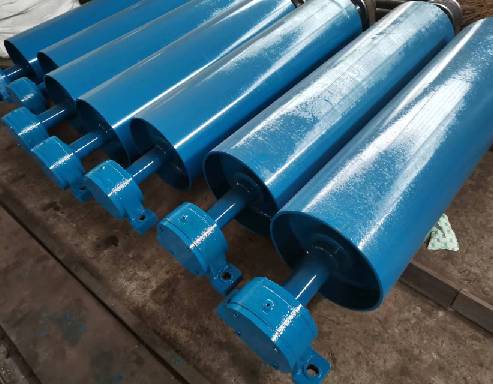 Afrikaans
Afrikaans  Albanian
Albanian  Amharic
Amharic  Arabic
Arabic  Armenian
Armenian  Azerbaijani
Azerbaijani  Basque
Basque  Belarusian
Belarusian  Bengali
Bengali  Bosnian
Bosnian  Bulgarian
Bulgarian  Catalan
Catalan  Cebuano
Cebuano  Corsican
Corsican  Croatian
Croatian  Czech
Czech  Danish
Danish  Dutch
Dutch  English
English  Esperanto
Esperanto  Estonian
Estonian  Finnish
Finnish  French
French  Frisian
Frisian  Galician
Galician  Georgian
Georgian  German
German  Greek
Greek  Gujarati
Gujarati  Haitian Creole
Haitian Creole  hausa
hausa  hawaiian
hawaiian  Hebrew
Hebrew  Hindi
Hindi  Miao
Miao  Hungarian
Hungarian  Icelandic
Icelandic  igbo
igbo  Indonesian
Indonesian  irish
irish  Italian
Italian  Japanese
Japanese  Javanese
Javanese  Kannada
Kannada  kazakh
kazakh  Khmer
Khmer  Rwandese
Rwandese  Korean
Korean  Kurdish
Kurdish  Kyrgyz
Kyrgyz  Lao
Lao  Latin
Latin  Latvian
Latvian  Lithuanian
Lithuanian  Luxembourgish
Luxembourgish  Macedonian
Macedonian  Malgashi
Malgashi  Malay
Malay  Malayalam
Malayalam  Maltese
Maltese  Maori
Maori  Marathi
Marathi  Mongolian
Mongolian  Myanmar
Myanmar  Nepali
Nepali  Norwegian
Norwegian  Norwegian
Norwegian  Occitan
Occitan  Pashto
Pashto  Persian
Persian  Polish
Polish  Portuguese
Portuguese  Punjabi
Punjabi  Romanian
Romanian  Russian
Russian  Samoan
Samoan  Scottish Gaelic
Scottish Gaelic  Serbian
Serbian  Sesotho
Sesotho  Shona
Shona  Sindhi
Sindhi  Sinhala
Sinhala  Slovak
Slovak  Slovenian
Slovenian  Somali
Somali  Spanish
Spanish  Sundanese
Sundanese  Swahili
Swahili  Swedish
Swedish  Tagalog
Tagalog  Tajik
Tajik  Tamil
Tamil  Tatar
Tatar  Telugu
Telugu  Thai
Thai  Turkish
Turkish  Turkmen
Turkmen  Ukrainian
Ukrainian  Urdu
Urdu  Uighur
Uighur  Uzbek
Uzbek  Vietnamese
Vietnamese  Welsh
Welsh  Bantu
Bantu  Yiddish
Yiddish  Yoruba
Yoruba  Zulu
Zulu snub pulley
Understanding Snub Pulley A Key Component in Mechanical Systems
In the realm of mechanical engineering, particularly in the design and functionality of conveyor systems, elevators, and other machinery, the snub pulley plays a pivotal role. This component, while often overlooked, significantly enhances the efficiency and effectiveness of various systems. In this article, we will delve into the function, design, benefits, and applications of a snub pulley, highlighting its importance in mechanical operations.
What is a Snub Pulley?
A snub pulley is a type of pulley used to redirect the path of a belt or rope, primarily in belt-driven systems. Positioned strategically between the driving pulley and the driven pulley, it allows for an increase in the contact area between the driving belt and the pulley. This extra contact enhances the grip of the belt, enabling it to transmit power more effectively. Snub pulleys are typically smaller in size compared to other pulleys and can be positioned at angles to redirect the belt's path.
The Function of Snub Pulleys
The primary function of a snub pulley is to improve the tension of the belt. In mechanical systems, maintaining optimal tension is crucial; too much slack can lead to performance issues, while excessive tension can cause wear and tear on components. By adjusting the tension and the angle of the belt, snub pulleys ensure that the belt operates smoothly and efficiently. Additionally, snub pulleys can help correct any misalignment in the system, driving the belt back to its intended path and reducing the risk of slippage.
Another important function of a snub pulley is increasing the life span of the belt
. A well-maintained tension leads to less wear on the belt, preventing premature failure and reducing replacement costs. Furthermore, snub pulleys assist in absorbing shocks and vibrations that can arise during operation, protecting both the belts and the machinery it drives.Design Considerations
snub pulley

When designing a system that incorporates a snub pulley, several factors must be taken into account. The size of the snub pulley, the material it’s made from, and its placement within the system are all critical components. Typically, snub pulleys are made from durable materials such as steel or reinforced plastics that can withstand the tensions and vibrations present in heavy-duty applications.
The diameter of the pulley also plays a significant role; a larger snub pulley can provide a greater arc of contact with the belt, which can enhance friction and consequently improve power transmission. Engineers must consider the specific requirements of the system to determine the most effective pulley size and material.
Applications of Snub Pulleys
Snub pulleys are utilized in various applications across multiple industries. They are commonly found in conveyor systems, where they aid in redirecting the belt and maintaining proper tension for smooth operation. In the mining and agriculture industries, snub pulleys are crucial for driving belts that transport materials, helping to optimize efficiency and minimize downtime.
Additionally, snub pulleys are integral to the operation of elevators, where they help guide and support the cables that lift and lower the elevator car. The use of snub pulleys in automotive applications, such as in belt-driven accessories, showcases their versatility and widespread applicability.
Conclusion
In conclusion, the snub pulley, despite its simple appearance, is an essential component in many mechanical systems. Its ability to enhance belt tension, correct misalignment, and extend the life of belts makes it a key player in ensuring efficient operation. As industries continue to evolve and demand higher efficiencies, the importance of well-designed snub pulleys cannot be overstated. Whether in conveyor systems, elevators, or vehicles, a snub pulley helps keep the gears of industry turning smoothly.
-
Revolutionizing Conveyor Reliability with Advanced Rubber Lagging PulleysNewsJul.22,2025
-
Powering Precision and Durability with Expert Manufacturers of Conveyor ComponentsNewsJul.22,2025
-
Optimizing Conveyor Systems with Advanced Conveyor AccessoriesNewsJul.22,2025
-
Maximize Conveyor Efficiency with Quality Conveyor Idler PulleysNewsJul.22,2025
-
Future-Proof Your Conveyor System with High-Performance Polyurethane RollerNewsJul.22,2025
-
Driving Efficiency Forward with Quality Idlers and RollersNewsJul.22,2025





























